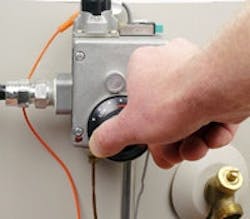Boilers and heaters account for a significant share of a plant's purchased fuel cost. Combustion air fans are necessary to provide enough combustion air to the boiler or heater's burner system. Louvers, inlet guide vanes or variable speed drives control the amount of air allowed into a boiler. Configuring a combustion air fan to allow the proper amount of air into the burner can improve boiler efficiency, yielding energy savings and better system reliability. In this case study, a nitrogen-based fertilizer plant saved more than $420,000 annually by optimizing its steam system cost.
[pullquote]
PCS Nitrogen is the U.S. subsidiary of Potash Corp of Saskatchewan, Inc., a major producer of three agricultural fertilizers: nitrogen, phosphate and potash. PCS Nitrogen's Augusta, Ga., plant is the largest producer of nitrogen-based chemical and fertilizer products in the eastern United States. This highly integrated manufacturing site uses natural gas to manufacture a range of intermediate and end-user products.
The plant's steam system operates a 150,000-lb/hr auxiliary boiler with a normal generation rate of 45,000 lb/hr. A 300-hp motor-driven fan delivers combustion air to the burner. Improvements to the plant's heat recovery capacity significantly lowered the need for steam from the auxiliary boiler. However, the combustion air fan's inlet louvers wouldn't seal tightly, causing excessive air leakage at low loads. Thus, engineers had to mechanically set the boiler's low-load limit at 28,000 lb/hr (19%) to maintain proper flame conditions and prevent boiler shutdown. Actual steam demand goes as low as 50% of the minimum steam generation; therefore, up to 14,000 lb/hr of steam was vented. In addition, because the fan speed wasn't adjustable, when the louvers closed, turbulence and vibration ensued, causing stress on the fan system bearings. Also, the boiler feed water pumps operated at a higher output level to provide adequate feed water to the boiler.
Plant engineers knew fan speed control could lower the turndown steam load, while keeping the auxiliary boiler running. However, installing a variable-frequency drive (VFD) to vary motor speed wasn't cost effective as it required considerable electrical work and reconfiguration of the fan system and the boiler room. In addition, the project would demand the boiler be shut down for at least two weeks, which would result in an unacceptable amount of production downtime.
After doing some research, the engineers opted to install a mechanical speed control device that uses magnetic induction to induce eddy currents that transmit motor energy in the form of torque. Because the eddy current drive (ECD) was mechanical, it had fewer sensitive electronic parts and didn't require an inverter, extensive wiring or boiler room reconfiguration. The ECD cost one-third the price of a similarly sized VFD and would take just three days to install. So, plant engineers timed the installation to coincide with the boiler's annual maintenance stoppage, when the boiler is offline for about four days. The engineers enlarged the fan base to accommodate the ECD. Because the fan motor was directly coupled, the ECD could easily be placed in line with the fan shaft. The engineers installed a new actuator for the ECD and set a minimum fire rate of 14,000 lb/hr with the louvers in the minimum fire position. The ECD reduced the louvers' leakage rate, allowing the boiler's normal firing rate to be cut in half while maintaining a stable flame in the boiler.
The ECD allowed the boiler to control the combustion air flow to the burner and modulate the fan motor speed to respond to changing load patterns with greater precision. As a result, plant personnel were able to lower the boiler's minimum turndown limit from 28,000 lb/hr to 22,000 lb/hr (19% to 15%), reducing vented steam by 6,000 lb/hr. The first phase of the project yielded annual energy cost savings of $420,000 and energy savings of 76,400 MMBtu. In addition, the ECD eliminated turbulence and vibration, reducing stress on the fan motor and bearings. Reduced venting also cut down on boiler feed water consumption. The plant recovered the $65,000-project cost in less than two months. The simpler maintenance needs of the ECD provide an added advantage.
Optimal control of combustion air is essential for efficient performance of boilers or heaters. When VFD installations are cost-prohibitive, alternative speed-control options such as ECDs, slip-resistance controllers and DC motors could achieve the same objective and spin-off benefits.
Source: Project Fact sheet, Office of Industrial Technologies, Energy Efficiency, U.S. DOE
About the Author
Ven Venkatesan
Energy Columnist
Ven Venkatesan is a former Energy Saver columnist for Chemical Processing.

